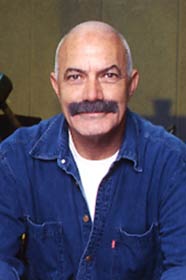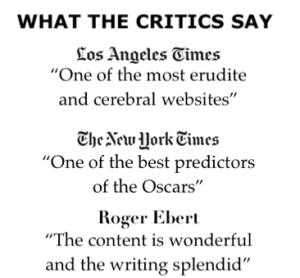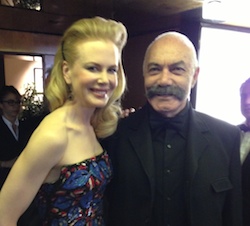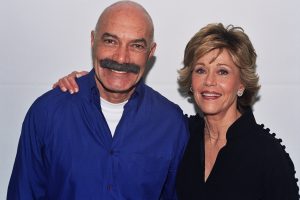Frank Marshall on Revisiting Bee Gees in HBO Documentary: “Their Story Was One About Survival”
The helmer of The Bee Gees: How Can You Mend a Broken Heart explains the enduring musical legacy of the Gibb brothers, a trio that defined the sound of an era and influenced a generation of pop stars.

In HBO’s The Bee Gees: How Can You Mend a Broken Heart, director Frank Marshall follows Barry Gibb — the sole surviving member of the Bee Gees, the popular trio that included his brothers Robin and Maurice Gibb — as he reflects on his family history and their ascent into pop stardom.
The trio’s youngest brother, Andy Gibb, was a best-selling solo artist before his death at age 30 in 1988.
While most might think of the Bee Gees solely as the band behind the Saturday Night Fever soundtrack, the documentary portrays the trio as an ever-evolving and extremely influential group of artists who were inseparable musically and emotionally. The Gibbs not only survived the backlash to disco in the early ’80s — pivoting from pop stars to superstar songwriters and producers — but private familial struggles as well.

Getting involved in this project?
It evolved out of being in the right place at the right time. I was having a meeting with the CEO of Capitol Records, Steve Barnett. I had a family history with Capitol; my dad was a composer, guitar player and producer who worked there in the ’60s, and it was very nostalgic for me to be there. I suggested we do a project with Capitol, and Steve said they were trying to reinvigorate some of their catalog and that they had just bought the Bee Gees. I said, “I love the Bee Gees!” It was that simple.
Knowing a lot about their story?
It’s in line with people’s reaction to the movie: I knew them from Saturday Night Fever, and I knew they were brothers. I was working at Paramount on 1979’s The Warriors when Saturday Night Fever was coming out, and I remember from those days that this was a little disco movie. And then suddenly it was the biggest movie with a huge soundtrack. I discovered, much to my disappointment, that Barry hadn’t even seen the script before writing the songs. I imagined that they had written all the songs having been inspired by the story and the movie.
Barry as Keeper of Family’s History
It took some time to really get to know each other. And it was bittersweet for him. He was very gracious and very humble and was always reflecting but I can tell he really misses his brothers. I met with Maurice and Robin’s family, too, and they would all get emotional about their dads or their husbands. But it was kind of cathartic for everyone. The great home video footage came from getting to know the families. It’s what happens when you’re making a docu about real people: You get to know them.
For me, it was also celebrating their legacy and the longevity they had. Their story was one about survival. They never fit into a category.
Surprises about Their Careers?
It’s that songwriting process that I was most [excited about] discovering — you know, where do these songs come from? I think in the movie it’s Chris Martin who says, “It’s in the air. The songwriter receives songs, they don’t just write them.” Barry told me the story about writing “Jive Talkin’ ” when they were driving across the bridge in Miami and the sound of the tires going over the bridge inspired that opening riff. He was receiving that song as they drove over the bridge. So I thought that was really cool. When working with Maurice and Robin, they would riff off of one another and come up with a song in that short amount of time.
Of course, they would refine it when they got to the studio. But there are also songs like their American debut single “New York Mining Disaster 1941,” inspired by the 1966 Aberfan disaster in Wales.
These little pieces of time inspired their songs, and they were writing stories. I think that’s why their lyrics affect people so much. People could identify with their stories.
Black Musicians Inspired Bee Gees’ Music–Disco Demolition Night at Chicago’s Comiskey Park
Disco Demolition Night was a huge, infamous incident. How did it come about? This wasn’t just about the music, but about the culture at that time — it was the story of America, really. I found two great characters in Nicky Siano [a resident DJ at Studio 54] and Vince Lawrence [an usher at Comiskey that night who became a producer and house music pioneer]. They put the social context to it that wasn’t really there yet. The backlash came first from the commercialization of disco, as Nicky pointed out. And the Disco Demolition night was really about Black and R&B records. That’s what I love about docs. There’s a freedom that I don’t have in my day job, where everything is planned out. It’s another way of telling a story — you’re going down one street and suddenly you have a big left turn down another.
First Documentary as Director?
It’s a lot different than a feature, where you write your script and then you go shoot it and then you post it. The writing part of a documentary almost starts with the editing. It’s kind of backward to making a feature. And I love it. I love working with my editors. We just had a ball in the cutting room, because you can move stuff around and put this here and that there. It’s my favorite thing.
Bee Gees Song to Introduce to New Listeners?
I’d pick a love song, which is “How Deep Is Your Love?” When you hear the harmonies, the way it moves. It’s one of those songs that when you hear it, it stays with you. I can think of the lyrics now: “I know your eyes in the morning sun, I feel you touch me in the pouring rain. And the moment that you wander far from me, I want to be in your arms again.”
That’s a love song. You know, we need more love songs.



